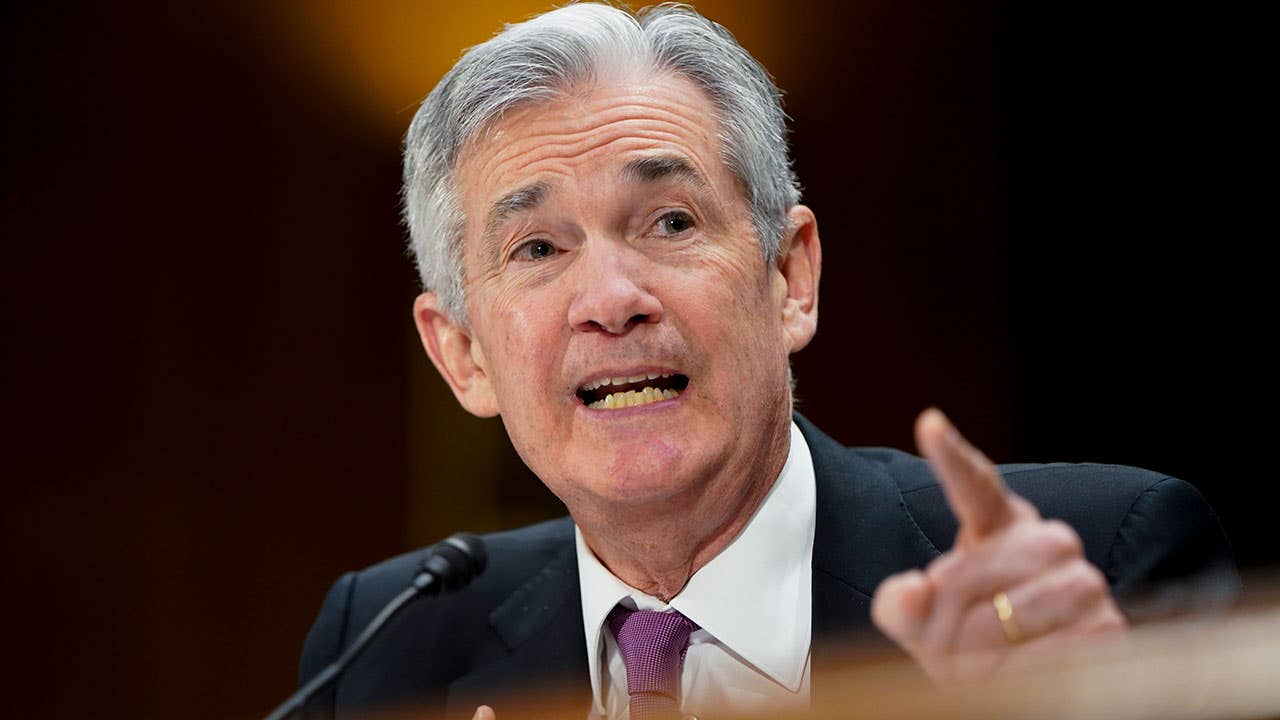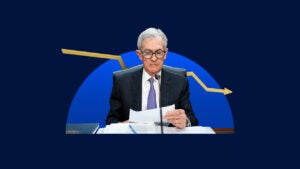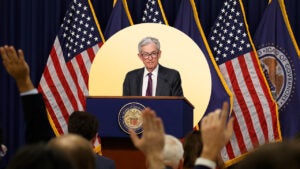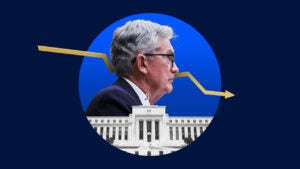Powell justifies a ‘patient’ central bank on rate hikes during Senate testimony

Federal Reserve Chairman Jerome Powell justified the central bank’s patient approach to future interest-rate increases, delivering a positive assessment of the U.S. economy that nonetheless still faces some risks.
Amid “muted inflation pressures,” volatile financial markets, global growth uncertainties and a government shutdown, now is “a good time to be patient and watch and wait and see how the situation evolves,” Powell told members of the Senate Banking Committee on Tuesday during his semiannual testimony to Congress. “When I say we’re going to be patient, what that really means is, we’re in no rush to make a judgment about changes in policy.”
After raising interest rates four times in 2018, the Fed voted unanimously at its January policy meeting to hold borrowing costs steady. U.S. central bankers vowed in their post-meeting statement to be “patient” with their timing of future “adjustments.”
The pivot left some market participants wondering whether the Fed’s next move could be up or down, and whether the Fed had reached the end of its tightening cycle.
“While we view current economic conditions as healthy and the economic outlook as favorable, over the past few months, we have seen some crosscurrents and conflicting signals,” Powell said in a prepared statement to lawmakers.
The Fed has been in the middle of a complicated balancing act for nearly four years, when it first started raising rates from near-zero. They’re hoping not to burst the economic expansion by raising rates too quickly, while also preventing the economy from overheating by waiting too long to act.
Records from the Fed’s January meeting show that officials were divided on that outlook. Some policymakers thought more rate hikes were necessary if the economy performs as they expect, while others asserted that nudges would only be on the table if inflation picks up.
Powell’s testimony, however, offered minimal discussions about the Fed’s path for interest rates. Instead, the chief central banker discussed topics such as the federal debt ceiling, labor force participation and the balance sheet normalization process.
Powell calls debt ceiling a ‘very big deal’
Lawmakers on Capitol Hill have a big deadline looming this week: the debt ceiling.
The national debt surged past $22 trillion in February, and the government on March 1 is set to reach the limit that it’s legally allowed to borrow money. This could spell trouble for the U.S. government, as it has to regularly sell bonds to finance its budget deficit, which is estimated at $897 billion by the Congressional Budget Office.
Congress could elect to raise the debt ceiling, while the Treasury Department could also use “extraordinary measures” to fund its obligations. Still, Powell offered his two cents on what the economic impact of missed bills could look like.
“The idea that the U.S. would not honor all of its obligations and pay them when due is something that can’t even be considered,” Powell said. “It would be a very big deal not to pay all of our bills. That’s something that the U.S. government should always do.”
Powell also called upon lawmakers to address the debt-to-GDP ratio, which was more than 104 percent during the third quarter of 2018, according to economic data from the Federal Reserve Bank of St. Louis.
“The U.S. federal government is on an unsustainable fiscal path,” Powell said.
Labor-force participation a responsibility for both Fed, Congress
The share of prime-age workers who are employed or seeking employment has risen as of late, but it still lags other developing countries, Powell told Senate Banking Committee members.
“It’s a very troubling concern,” Powell said. “As the country ages, labor-force participation should decline at a very steady level. Nonetheless, even allowing for that, we’re lower than we need to be.”
Workforce participation was 63.2 percent in January, which edged up from 63.1 percent in December, according to the Department of Labor. That’s the highest in nearly six years, but still nowhere near the pre-crisis level.
Economists say that when more workers join the labor force, it pushes up the jobless rate, which held near a half-decade low of 4 percent in January. At the same time, it could be a reason why the unemployment rate is so low.
Powell called for new legislation out of Congress to address workforce participation, adding that it should not be just a Fed responsibility.
“The gains we’ve seen over the past year have been very positive and very welcome from our standpoint. We don’t know how long they can be sustained, but we hope for a long time,” Powell said. “We need a broad policy focus on how to sustain labor-force participation, including not just through Fed policy but through legislative policy as well.”
The balance sheet will leave room for ‘ample reserves,’ Powell says
Powell provided a clearer picture about what the balance sheet will look like after its normalization process ends.
The Fed chief described that a reserve balance of $1 trillion, plus a buffer, is “a reasonable starting point, an estimate of where we might end up.” That’s similar to what Federal Reserve Bank of New York President John Williams outlined in an interview with Reuters.
It’s also larger than before the Great Recession – but Powell said that’s to be expected.
After the financial crisis, the Fed started requiring that some of the country’s largest banking institutions hold large amounts of liquid assets to act as a buffer, Powell said.
“One of those assets that the banks like to hold to satisfy those requirements is bank reserves,” Powell said during questioning from Sen. Mike Crapo, R-Idaho. “The demand for reserves is going to be very substantially higher than it was before the crisis and will not go back to those lower levels, in any case.”
(Read: Everything you need to know about the Fed’s balance sheet – and how it could impact you)
The Fed has started to shrink its holdings of mortgage-backed securities and Treasuries that it started buying during the financial crisis as a tool to prop up the economy.
The central bank has already shed about $310 billion of assets since the middle of 2018, Powell said. The balance sheet currently stands at $3.9 trillion, according to figures from the Federal Reserve’s Board of Governors.
Fed officials have outlined in speeches that they’ll likely be discussing plans to officially end the run-off by the end of this year. Policymakers, however, will remain flexible, Powell said.
“We are prepared to adjust any of the details for completing balance-sheet normalization in light of economic and financial developments,” Powell said.






